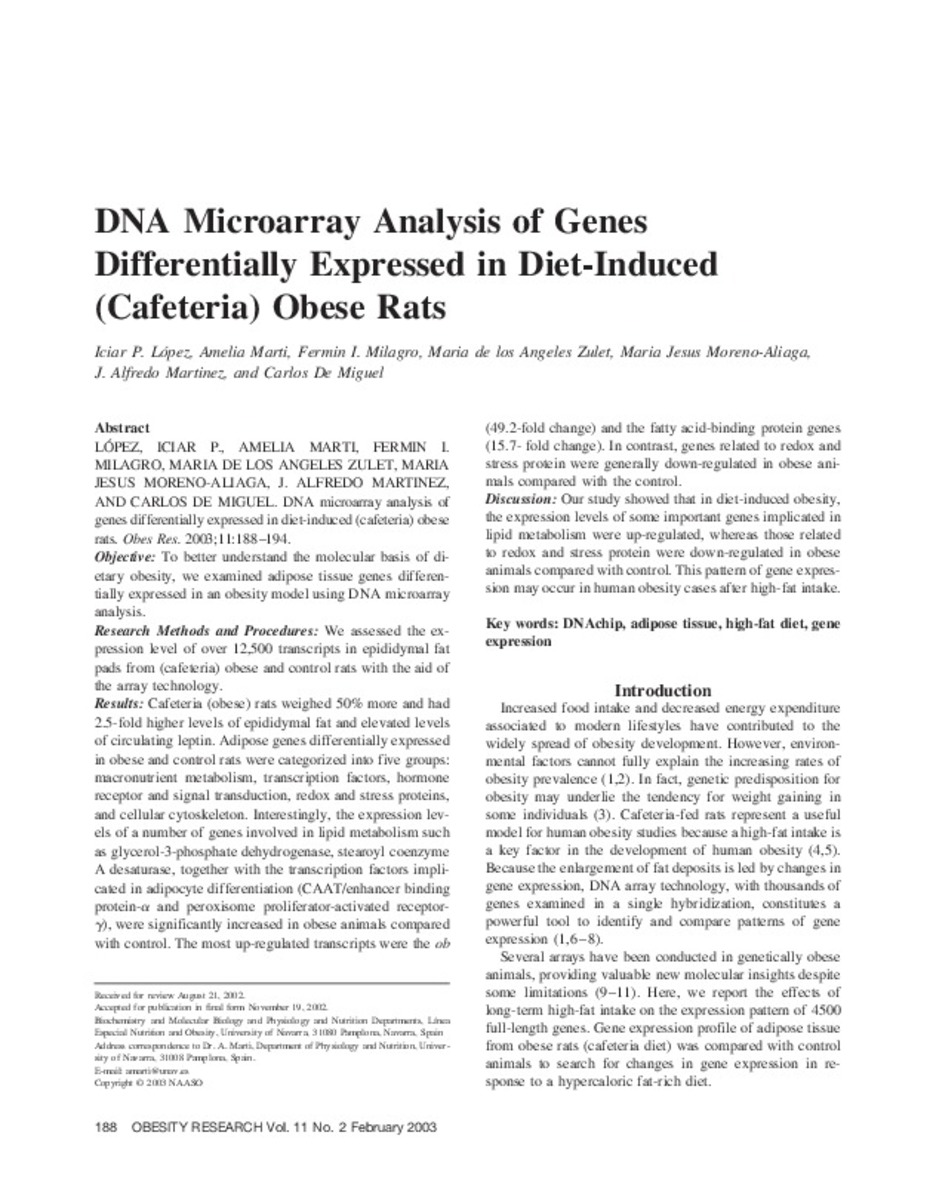DNA microarray analysis of genes differentially expressed in diet-induced (cafeteria) obese rats.
Palabras clave :
DNAchip
Adipose tissue
High-fat diet
Gene expression
Fecha de publicación :
2003
Editorial :
North American Association for the Study of Obesity
Cita:
Lopez IP, Marti A, Milagro FI, Zulet Md Mde L, Moreno-Aliaga MJ, Martinez JA, et al. DNA microarray analysis of genes differentially expressed in diet-induced (cafeteria) obese rats. Obes Res 2003 Feb;11(2):188-194.
Aparece en las colecciones:
Estadísticas e impacto
0 citas en

0 citas en

Los ítems de Dadun están protegidos por copyright, con todos los derechos reservados, a menos que se indique lo contrario.









